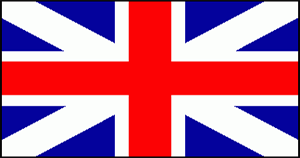War of 1812 Battles |
Colonial Wars |
American Wars |
Battle of Chrystler's Farm
November 10, 1813, Chrystler's Farm ( Near Cornwall, Ontario), Upper Canada
 |
|||||||||||||||||||||
|
Maj. Gen. James Wilkinson arrived at the naval base at Sackett's Harbor in early October, 1813. His plan was to strike at Montreal by traveling down the St. Lawrence River, while Maj. Gen. Wade Hampton would invade the province of Lower Canada through the Chatueaguay River.
However, Hampton was defeated at the Battle of Chateauguay and turned back, leaving Wilkinson to conduct his attack alone. Though he had an impressive force of about 8,000 soldiers, as well as a large fleet of boats, Wilkinson was plagued by trouble. At first, he could not agree with the United States Secretary of War John Armstrong whether to attack Montreal or Kingston. When Montreal was finally chosen as the target, the American forces encountered an early snowstorm, and a number of their boats were damaged.
When the British learned of the American advance, Lt. Col. Joseph Morrison with 630 regulars, later joined by 240 more, and 2 cannon was ordered to pursue from the British side of the St. Lawrence. Canadian militia also fired on the Americans from the shores of the river, and Wilkinson was forced to send 2,500 soldiers to protect his boats. When he learned of the pursuing British force, he ordered another 2,000 men as rear guard.
By November 10, British Capt. William H. Mulcaster was hot on Wilkinson’s heels with a flotilla of gunboats carrying 2 regiments of British soldiers. The Americans had now reached the dreaded Long Sault rapids. To lighten the boats, and to clear the bank of enemies, Wilkinson landed his army near a farm owned by a man named John Chrysler.
This was exactly what the British had hoped he would do. They landed and deployed their 2 regiments at Chrysler's Farm, under Lt. Col. Joseph W. Morrison, with the express intention of engaging the Americans. Wilkinson simply could not leave this small British force of 800 intact to dog him all the way to Montreal. Too sick to command himself, he ordered his subordinate, Brig. Gen. John P. Boyd, to destroy it before marching on.
In the early afternoon, an American regiment advanced towards the British left. Suddenly, a unit of concealed Voltigeurs and First Nations warriors rose and fired. They traded shots with the American force briefly before the sheer number of U.S. troops forced them to run for their lives, with the Americans in hot pursuit. This was a critical point - if the Americans had managed to force their way between the British 89th Regiment and the swamp beside them, they could have turned and attacked the British rear. But Morrison had the 49th Regiment execute a parade-ground maneuver, making it swing backwards one quarter turn as a single unit so as to face the charging Americans with a solid volley. The British charged back and the American soldiers fled from the battle, many crossing to the American side of the St. Lawrence.
Even though Wilkinson's force was still much stronger, the American commander realized that winter was too close, and capturing Montreal in the time he had left would be all but impossible. When the general learned that Hampton's force did not accomplish its objectives, Wilkinson was furious, and withdrew his army from Lower Canada, blaming the failure of the campaign on Hampton.
